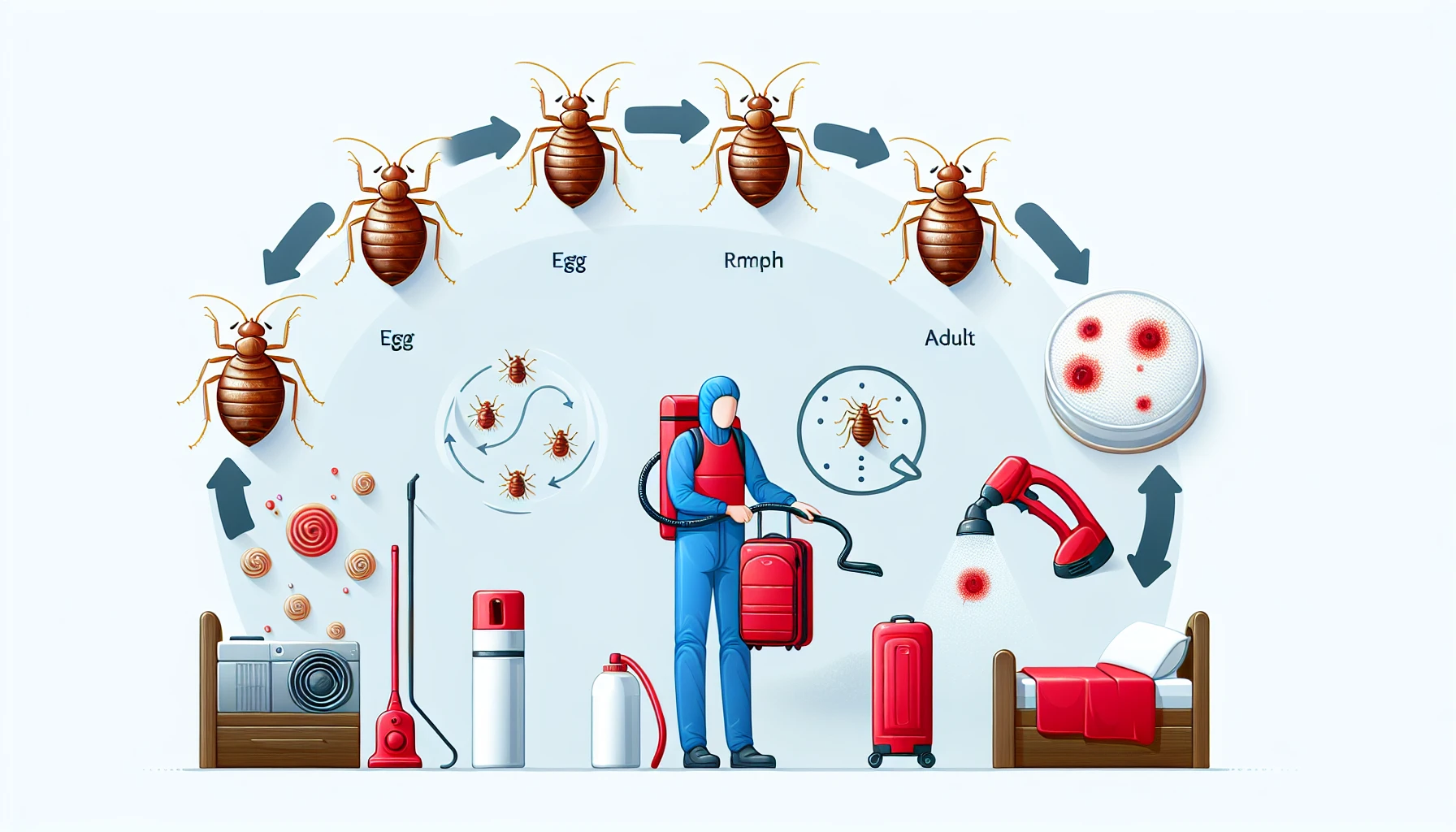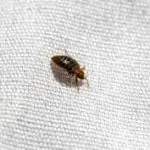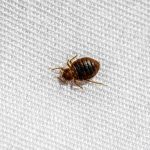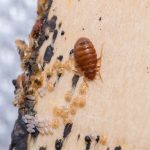Bed Bug Eggs Uncovered: Lifecycle, Risks, and Eradication
Introduction to Bed Bug Eggs
When we talk about bed bugs, our skin crawls at the very thought of these nocturnal nuisances. But to victoriously vanquish them, we must dive into the world of the bed bug starting at its humble beginnings – the egg. Understanding the lifecycle of bed bug eggs isn’t just an academic exercise; it’s a cornerstone of effective pest control. This unassuming, pearly speck marks the start of what could escalate into a full-blown infestation nightmare. So, why is this knowledge critical? Because the key to disrupting their cycle lies in targeting these tiny time bombs before they hatch and multiply.
Picture this: a single female bed bug stealthily deposits her eggs in the crevices of your mattress—or even worse, the folds of your favorite pajamas. Each egg is a ticking time capsule, preparing to release yet another bloodthirsty critter into the safety of your sanctuary. And here’s where it gets even more real for you: while adult bed bugs might be easier to spot and squash, these miniscule eggs can lurk undetected, eluding even the most eagle-eyed amongst us. That’s precisely why this first chapter of our bed bug saga is critical, detailing the stealthy invasion of these pint-sized pests from egg to nip in the night.
Throughout this article, we’ll unearth the secrets of successful pest management strategies, focusing on how to detect and demolish these eggs before they have a chance to haunt your home. Now, take a breath and brace yourself; we’re delving into a world that’s hidden in plain sight, a world where knowing your enemy is half the battle won. And don’t just take our word for it—see for yourself:
So, what can you expect to uncover as we peel back the layers of the bed bug’s life? Prepare to discover their clandestine development stages, the risks posed at every turn, and the most effective methods to send them packing. With each section, you’ll arm yourself with the knowledge you need to stand guard against these unwelcome visitors. It’s time to turn the tide in this battle of the bugs, beginning with the insidious inception of their lifecycle: the bed bug egg.
Understanding Bed Bug Biology
When it comes to the lifeblood of the notorious bed bug’s lifecycle, it all begins with the unassuming egg. Picture this: a mother bed bug, hidden away in the nooks of your mattress, carefully laying pearl-white eggs. Each egg, barely the size of a speck of dust, is the genesis of a potential infestation storm. To gain the upper hand in this microscopic battlefield, we must delve into understanding how these critters proliferate right from their initial stage of life.
The egg-laying process of bed bugs is a stealthy affair. A female can deposit up to five eggs a day, preferably in tight, sheltered spaces that offer safety from prying eyes and potential harm. It’s akin to a game of hide and seek, where the prize is survival. These eggs are adhered to surfaces with a glue-like substance that ensures their progeny remain undisturbed during their incubation period, which typically spans roughly 6 to 10 days in optimal conditions. Warmth and humidity are their best allies, as they mimic the early spring, an ideal time for new life.
Now, imagine a tiny bed bug egg thriving in the subtle warmth of your bedroom. It’s the perfect hatching ground. But what factors play into the hatching success of these eggs? It turns out that temperature is a key player. A cozy range of 70-90°F (21-32°C) is just right, setting the stage for the new brood to emerge hungry and ready to feed. Humidity, too, weighs in; they desire moderate levels, as too much humidity can be as detrimental as a drought for these delicate eggs.

If the conditions are just right, bed bug eggs hatch into nymphs, miniature versions of their adult counterparts but translucent and craving their first meal. These minuscule vampires waste no time and seek out a blood feast post-hatching to fuel their journey through five developmental stages before reaching adulthood. Without sustenance, the bed bug’s lifecycle grinds to a halt; with it, they creep closer to becoming the pesky, hardy creatures known for tormenting restful slumber.
By understanding the nuances of bed bug eggs and their early life stages, we armor ourselves with knowledge. It’s a critical step in preventing their spread and ensuring our households remain sanctuaries, free of pests. For more on how to safeguard your home from these uninvited guests, check out our article on preventive pest control. With vigilance and insight, we can interrupt the bed bug lifecycle and maintain the peace of our living spaces.
Recognizing Bed Bug Eggs
Imagine this: You’ve just settled into bed when you spot something peculiar lodged in the crevices of your mattress seams. A closer inspection reveals tiny, pearl-like objects deftly hiding in the nooks. Chances are, you’ve just uncovered a cluster of bed bug eggs—signaling a potential intrusion by one of the most tenacious household pests.
Delving into their physical characteristics, bed bug eggs are about the size of a pinhead, measuring approximately 1mm in length. These eggs exude a sense of elusiveness with their translucent, milky white exterior. Picture this: wet rice grains, but with a more ovoid and slick appearance. Usually laid in batches, these eggs are often cemented in place by the female bed bug in out-of-the-way locales such as mattress seams, box springs, and even cracks in walls or furniture.
Distinguishing bed bug eggs from other pests can be quite the conundrum. However, an adept eye will notice their elongated shape and unique size, setting them apart from the eggs of fleas or ticks which are remarkably smaller. Here‘s an eye-opening read on bed bug bites to help shine a light on this shadowy subject.
It’s also vital to become versed in the habitats where these elusive eggs thrive. Aside from the familiar bedding and furniture, you might spot them behind wallpaper or beneath carpets—bed bugs are not shy about turning any cozy corner into a nursery. Unveiling these eggs is the first step in disrupting the bed bug lifecycle before it becomes a full-blown infestation.
To solidify your identification skills, take a moment to watch this insightful video that shines a spotlight on recognizing these minuscule menaces:
Embarking on the task of eradicating bed bug eggs is not for the faint-hearted but knowing what to look for can turn the tide in this silent battleground. Arm yourself with knowledge and vigilance, and these unwelcome guests won’t stand a chance.
Risks and Consequences of Ignoring Bed Bug Eggs
Imagine waking up to a sea of tiny invaders marching across your mattress. That’s right, we’re talking about bed bug eggs, the root of an infestation that can turn your sweet dreams into a full-blown nightmare. Dismissing bed bug eggs could lead you down a path where your home becomes a thriving metropolis for these unwelcome guests. Let’s delve into why early detection of bed bugs can save you from a world of trouble.
Bed bugs are crafty little critters, and their eggs are the secret agents of their world. Just a handful of these eggs, often no bigger than a speck of dust, can give rise to hundreds, if not thousands, of bloodthirsty offspring. The result? Conflict in your sheets. Bed bugs love to throw a feast on your blood, and with an unchecked army emerging from those tiny eggs, you’re the main course on the menu night after night.
But it’s not just the bites that you need to worry about. A bed bug colony is like a whisper that turns into a scream; it starts quietly but can escalate quickly to a pitch that can’t be ignored. The scars from bed bug bites can leave more than just physical marks—they’re a toll booth on your mental highway, charging you sleep, peace, and comfort. And if the psychological effects weren’t enough, a study suggests there can be serious, sometimes life-threatening reactions to these bites in certain individuals.
Don’t be fooled by their size; these bed bug babies can lead to big problems. A growing infestation can cause skin irritations, allergic reactions, and even secondary infections from scratching the relentless itch they leave behind. Moreover, the longer these pesky critters are allowed to play hide and seek in your abode, the more challenging and costly it becomes to show them the door.
Engaging professional pest control at the first sign of bed bug eggs is like hitting the mute button before the problem amplifies. It’s a critical step in the battle against the bed bug blues, protecting not only your physical well-being but also your sanctuary from becoming a breeding ground for these opportunistic invaders.

So, when you spot something suspicious, even if it’s as inconspicuous as a tiny egg on your bedspread, it’s time to raise the red flag. Because, in the world of bed bugs, those minuscule specks spell major trouble. Early detection is your best defense against turning your home into a bed bug bonanza. Stay vigilant, and keep your sleeping space sacred!
Effective Strategies for Eliminating Bed Bug Eggs
If you’re facing an uphill battle against the resilient and notorious bed bug eggs, it’s essential to arm yourself with the right tactics to claim victory. These tiny, pearl-like eggs are masters of concealment, making them particularly difficult to eradicate. But don’t despair—there are effective methods to detect and destroy these pesky critters, ensuring peace reigns once again in your sanctuary.
Unveiling the Hideouts
Bed bug eggs are often tucked away in the darkest nooks and crannies. Picture this: you strip your bed, confident that you’ve cleared every inch, yet these eggs remain hidden, clinging with a glue-like substance to fabrics, inside electrical outlets, and even behind picture frames. To outsmart these elusive foes, spot-treating with a reliable insecticide can be your initial line of defense, penetrating their secret lairs and disrupting their lifecycle before it wreaks havoc.
Pest Professionals to the Rescue
When the situation escalates beyond a simple DIY method, it’s time to call in the cavalry—professional pest control experts. These seasoned warriors come equipped with an arsenal of advanced tools and strategies to combat bed bug infestations. They don’t just target the visible culprits; they hunt down every last egg. Investing in a comprehensive extermination plan may be the most effective route to reclaiming your domain from these persistent invaders. It’s an investment in tranquility, knowing that your home is thoroughly scoured and safeguarded by skilled hands.
DIY Approaches: From Freezing to Steaming
For a hands-on approach to defeating bed bug eggs, consider employing temperature as an ally. Extreme cold and heat are kryptonite to bed bugs in all life stages, including their eggs. Freezing items infested with eggs or deploying steam can wipe out pockets of resistance. However, this cold and heat must penetrate deep into their hibernacula to be fully effective. It may take several cycles of freezing or a robust steamer to achieve total annihilation, but persistence pays off in the bug battle.
Chemical Warfare in Your Hands
Over-the-counter insecticides and growth inhibitors can also turn the tide in the struggle against bed bug eggs. Products containing pyrethroids, diatomaceous earth, or silica gel can cause havoc in the bed bug ranks. While these might be readily available, their application requires precision and care—protect your own health while laying siege to these pests.
Before you embark on your quest to demolish bed bug eggs, it might be helpful to see how others have tackled these challenges. For instance, take a look at this useful video showcasing techniques for thwarting these stubborn critters:
Whether you choose the soldier-like precision of profiteers or the satisfaction of a self-guided assault, the key ingredient is determination. Consistency and thoroughness in your chosen methods are your greatest allies in the war against bed bug eggs. No matter how formidable they may seem, with the right strategies in place, you can restore your home to the peaceful haven it should be.
Preventive Measures to Keep Bed Bugs at Bay
For any of you who cherish a peaceful night’s sleep above all, the thought of bed bugs can send a shiver down your spine. Imagine this: You tuck into bed after a long day, and just as you’re about to drift into dreamland, you feel it—the unwelcome presence of bed bugs. These tiny, elusive critters can ruin your comfort and, in no time, they can turn your sanctuary into a bustling hub for bed bug eggs. But fret not! With a few simple habits, you can shield your home from these unwanted visitors.
First off, cleanliness is your first line of defense. Regularly vacuum your home, especially around beds, furniture, and crevices, to suck up any daring scouts looking to set up camp. And let’s not forget about laundry—those high temperatures aren’t just good for getting stains out; they’re bed bug kryptonite. So, crank up the heat and wash your beddings, curtains, and clothes regularly to ensure any stowaway eggs go down with the ship.

Next, think like a detective. Inspect your abode regularly for signs of an infestation—rusty spots on your sheets, tiny eggshells, or live bed bugs. Keep a special lookout in the sanctuary of your bedroom, for bed bug eggs often find solace in the cracks and crevices of your bed frame or behind headboards. Meticulous scrutiny now could save you a world of trouble later on.
Moreover, your travel habits can mean the difference between bed bug-free bliss and a full-on infestation. Those savvy little creatures can hitch a ride on your luggage, so it’s imperative to inspect and vacuum your suitcases after trips and consider using luggage covers. If you’ve stayed in hotels or guest houses, don’t let your guard down until you’ve given your belongings a thorough look-over.
Last but not least, don’t roll out the red carpet for these pests with clutter. A clutter-free home isn’t just pleasing to the eye; it’s a fortress against bed bugs. They love hiding in the nooks and crannies of unorganized spaces, so by minimizing clutter, you’re effectively minimizing their potential real estate.
Arming yourself with these proactive strategies will not only help you in preventing the lay of bed bug eggs but will also provide you with the knowledge and habits to maintain a bed bug-free zone. Attack the problem before it begins, and you’ll keep your home, and dreams, intact.
Natural Remedies versus Chemical Treatments
When it comes to the eradication of bed bug eggs, the battle lines are often drawn between natural remedies and chemical treatments. It’s like pitting ancient herbal wisdom against the might of modern science. But which one emerges victorious in this creepy-crawly standoff?
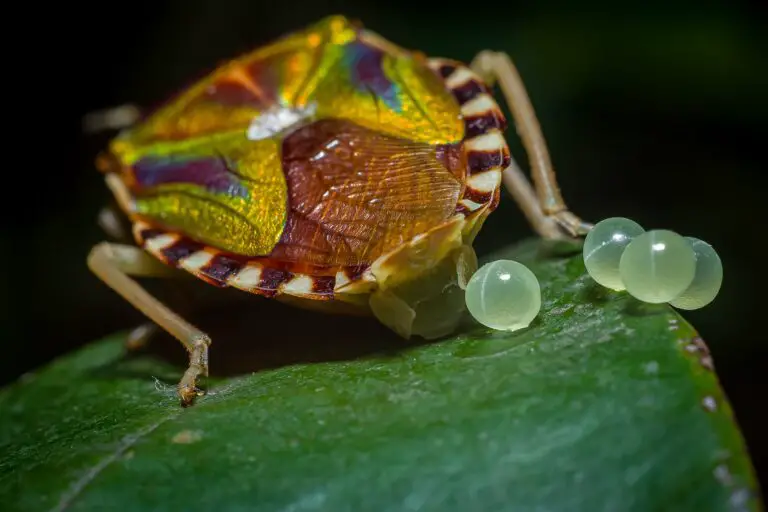
On one side, we have natural remedies: earth-friendly and often concocted from ingredients like essential oils, diatomaceous earth, and even baking soda. Advocates of these methods swear by their gentle impact on our environment and health. Take, for instance, a lavender oil spray – its floral scent is like kryptonite to bed bugs, yet it fills your home with a soothing aroma rather than a chemical fog.
Pros of Natural Remedies
These remedies shine in their safety. Children and pets roaming hunting for hidden treasures under the bed won’t find themselves coughing up a chemical storm. And let’s not forget the DIY enthusiasts who relish in the creation of these homebrewed mixtures, standing ready to combat the tiny invaders without the worry of toxic repercussions.
Cons of Natural Remedies
However, like a misguided superhero, natural remedies have their weaknesses. They often require patience, persistence, and a little elbow grease. Reapplication is the name of the game – sometimes daily – and without the residual effects of chemical treatments, bed bug eggs might just survive the botanical blitzkrieg.
Pros of Chemical Treatments
Enter chemical treatments, the high-tech armor in our analogy. These aren’t your garden variety bug sprays; they’re concocted with the sole purpose of decimating bed bug eggs and their devilish brood. Professional exterminators come equipped with these lethal elixirs, turning your abode into a no-bug zone swiftly and effectively.
Cons of Chemical Treatments
But even the mightiest warriors have their Achilles’ heel. Chemical treatments come with a badge of caution. Their toxic nature means delicate handling, vacating the premises during the treatment, and a vigilant eye on those after-effects. They can also wage an invisible war on the environment, accumulating where we least expect them.
Whether you opt for the natural path, weaving through the nuances of eco-friendly pest control, or choose the swift vengeance of chemical warfare, know that each comes with its arsenal and tactics. The key in this unlocking this battle is understanding the enemy – those pesky bed bug eggs – and choosing your weapons wisely.
Professional Pest Control: When to Call in the Experts
Discovering a bed bug egg in your home can evoke nothing short of an “eek!” moment. It’s the telltale sign of a larger problem: an infestation that can quickly spiral out of control. In such instances, despite the wealth of DIY solutions and old wives’ tales, professional pest control becomes not just an option, but a necessity.

Imagine waking up to itchy welts dotting your skin, a clear indication that bed bugs have made a feast of you overnight. At the earliest signs of bed bug eggs – tiny, pearl-like specks – lurking in the seams of your mattress or couch, it’s time to skip the uncertainty and call in the pros. Why? Because bed bugs are resilient creatures that can withstand a lot of the treatment methods that work on other pests.
Professional pest control experts bring to the table a level of expertise and arsenal of techniques that are pivotal in nipping bed bug infestations in the bud. From heat treatments that effectively wipe out bed bugs at all stages of life to chemical treatments tailored to your home’s specific needs, they’ve got the tools and know-how to reclaim your space. They’re particularly invaluable when dealing with bed bug eggs, which are notoriously difficult to eliminate due to their resistance to many forms of treatment.
Whether you’re dealing with a small onset of these nocturnal nuisances or a full-blown invasion, pest control professionals are equipped to assess the situation, devise a strategic plan of attack, and execute it with precision. This often includes a combination of treatments to ensure that not a single bed bug or egg is left lurking. The experts understand the importance of thoroughness – because missing just a few eggs can mean a resurgence of the problem in a matter of weeks.
Consider the case of the Jacksons, a family who tried every DIY method they could find online, only to watch in horror as their bed bug problem grew worse by the day. It wasn’t until they enlisted the help of qualified exterminators that they could sleep soundly, without the fear of creepy crawlies feasting at night.
Ultimately, when it comes to bed bugs, hesitation can lead to a larger infestation. Bringing in professional pest control services at the first sign of bed bug eggs isn’t an overreaction—it’s a smart, proactive move to protect your home, your sanity, and your family’s wellbeing.
Frequently Asked Questions
Have you ever woken up with itchy welts and immediately suspected you’re sharing your bed with unwelcomed guests? You might just be right. Bed bug eggs are the start of what could become a full-blown infestation in the blink of an eye. Let’s tackle some of the burning questions you have about these pesty beginnings, and arm you with the knowledge to end the bed bug lifecycle in its tracks.
What Do Bed Bug Eggs Look Like?
Imagine finding tiny, pinhead-sized, pearl-white eggs lurking in the crevices of your mattress. That’s what bed bug eggs look like. These little troublemakers are often laid in discreet places, hidden away from detection. Picture the nook between your mattress and headboard as a cozy nursery for these eggs, each one waiting to unleash another biting critter into your peaceful sanctum.

How Fast Do Bed Bug Eggs Hatch?
Say goodbye to the myth of a ‘seven-year itch’ because these eggs don’t waste any time. Within 6 to 10 days, given the right room temperature, these eggs will hatch and your bed might become a playground for nymphs (baby bed bugs). These nymphs are on a mission, molting five times before reaching adulthood, and each molt requires a blood meal – that’s where you come in, unfortunately.
Are Bed Bug Eggs Dangerous?
Thankfully, bed bug eggs aren’t vectors for disease, but the psychological toll and skin reactions to the bites they lead to are a different story. These can range from mild irritation to severe allergic responses. Moreover, there’s something inherently unsettling about knowing you’re sleeping atop a nest of future biters.
Can I See Bed Bug Eggs with the Naked Eye?
Yes, if you have sharp eyes and know where to look. These eggs are minuscule but visible, about the size of a speck of dust. Keeping an eagle eye on suspect areas — think bed seams, box springs, and even picture frames — can help you catch these eggs before they become a bigger problem.
How Do I Remove Bed Bug Eggs?
Stumbling upon these eggs can spark an urge to turn your bedroom upside down. While thorough cleaning and vacuuming are a good start, sometimes it’s not enough. In comes professional heat treatments or insecticides, which can be highly effective. Just like preparing for a siege, you’ve got to tackle these pests on all fronts: physically, chemically, and with relentless vigilance.
What Prevention Techniques Should I Use?
Prevention is your best line of defense. Protective encasements for mattresses and box springs are like the armor in your battle against these insects. Regular inspections of hotel rooms or second-hand furniture can save you from an infestation hitchhiking home with you. Remember, a vigilant eye and proactive measures can keep these bed bug eggs from ever calling your bed ‘home.’
Understanding the enemy is the first step to winning the war. With this arsenal of information at your disposal, you’ll be equipped to prevent, identify, and eliminate bed bug eggs. Stay alert and sleep tight, without letting the bed bugs bite!
